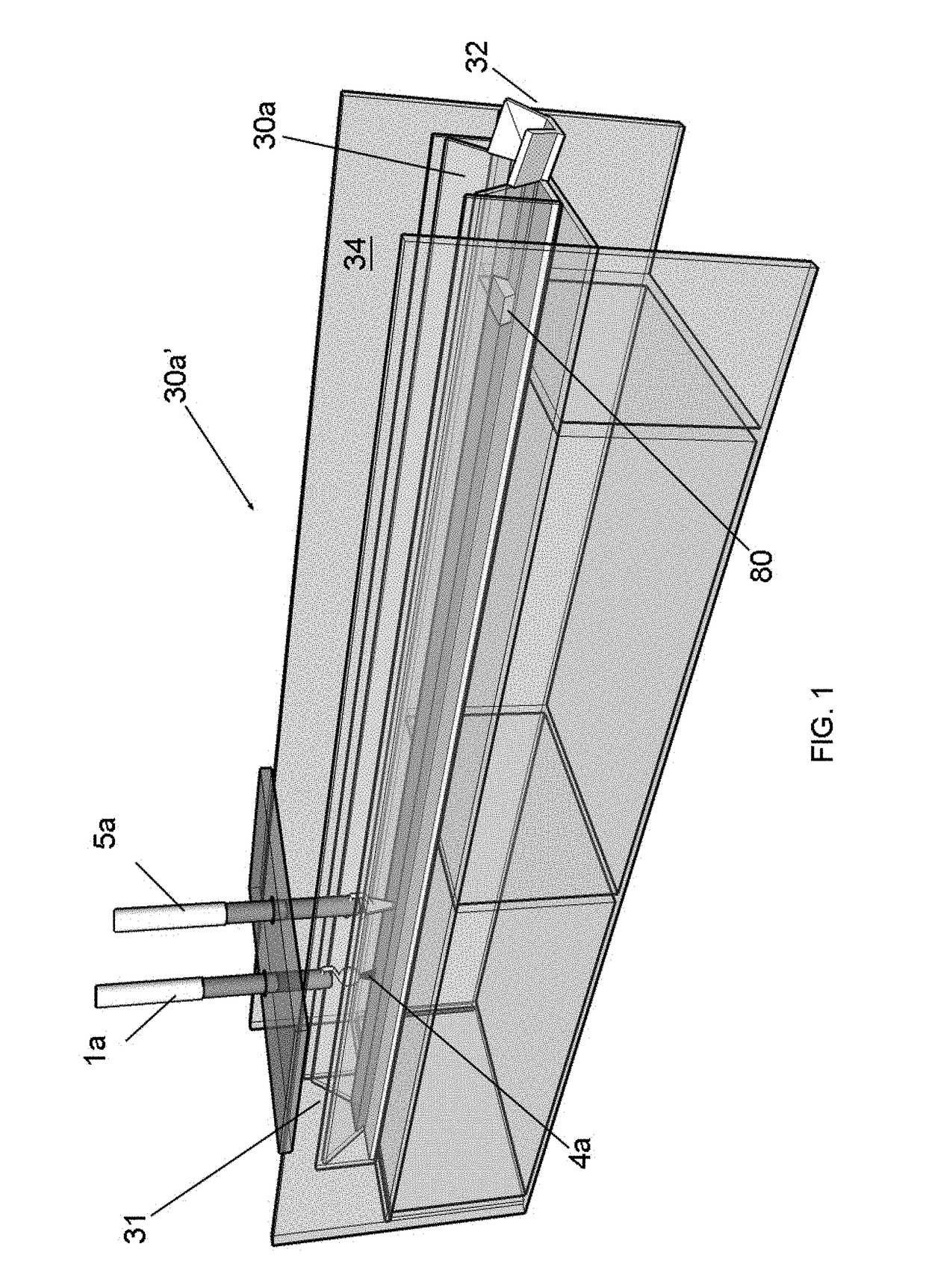Methods and Treatment for Certain Demyelination and Dysmyelination-Based Disorders and/or Promoting Remyelination
a demyelination and dysmyelination-based disorder technology, applied in the direction of inorganic non-active ingredients, drug compositions, metabolic disorders, etc., can solve the problems of dysmyelination or dysfunction, dysmyelination or dysfunction, and the type of abnormal or inferior performance of the underlying neuron(s), so as to minimize the potential for toxicity or complications, the effect of greater potency
- Summary
- Abstract
- Description
- Claims
- Application Information
AI Technical Summary
Benefits of technology
Problems solved by technology
Method used
Image
Examples
example 1
Manufacturing Gold Nanosuspension “CNM-Au8” to be Used for the Treatment of a Subject
[0109]In general, the CNM-Au8 nanosuspensions utilized for treatment purposes in Examples 2 and 3 are concentrated CNM-Au8 “neat” nanosuspensions, the neat product being made by utilizing certain embodiments of the invention associated with the apparatuses generally shown in FIGS. 1, 2C, and 3. All trough members 30a′ and 30b′ in the aforementioned FIGs. were made from ⅛″ (about 3 mm) thick plexiglass, and ¼″ (about 6 mm) thick polycarbonate, respectively. The support structure 34 (not shown in many of the FIGs. but shown in FIG. 1) was also made from plexiglass which was about ¼″ thick (about 6-7 mm thick). Each trough member 30a′ was integral with trough member 30b′. The cross-sectional shape of the trough member 30a′ described herein corresponded to that shape shown in FIG. 4B (i.e., was a trapezoidal-shaped cross-section). Relevant dimensions for 30a′ were “S,S′” which measured about 1.5″ (about...
example 2
Cuprizone Demyelination Model—16 Mouse Pilot Study
[0198]The goal of this pilot study was to determine if “CNM-Au8” nanocrystalline suspensions concentrated to 51 ppm and consumed ad libitum might influence the amount or degree of myelin sheath damage (or repair) which typically occurs during cuprizone-induced demyelination of neurons in a mouse brain. The Cuprizone mouse model is intended to simulate myelin sheath damage in mammals for multiple diseases that express themselves pathologically as demyelination or dysmyelination.
[0199]A total of 16 C57BL6 male mice were separated into 4 groups (four per group), as shown in Table 2. Two extra mice were used as a backup and were not needed in the study. The mice were 8 weeks old at the start of the study.
[0200]In an attempt to induce demyelination by introducing toxic cuprizone, and observe possible reduction of demyelination and / or the promotion of remyelination by treatment with gold nanosuspensions, two of the four groups were fed Cup...
example 3
Cuprizone Demyelination Model—2 Week / 5 Week—105 Mouse Study
[0244]Summary
[0245]The goal of this 105 mouse study was to determine if “CNM-Au8” nanosuspensions, provided to the mice: (1) either as an ad libitum treatment from water bottles at a gold concentration of about 50 ppm (as the only drinking liquid for the mice for the last 3 weeks or all of the 5 weeks in the study); or (2) by gavage treatment (for the last 3 weeks or all of the 5 weeks in the study) at a gold concentration of about 1000 ppm (and given once a day, by gavage, based on the weight of each mouse at a volume of about 10 mL of CNM-Au8 nanosuspension / kg of mouse body weight, “10 mL / kg”), might act as a therapeutic effective amount or a prophylactic effective amount and thus influence the amount of myelin damage present in the corpus callosum and / or promote remyelination of at least some axons in the corpus callosum. As in Example 2, the myelin damage was induced by the mice ingesting Cuprizone Feed.
[0246]A total of ...
PUM
| Property | Measurement | Unit |
|---|---|---|
| particle size | aaaaa | aaaaa |
| size | aaaaa | aaaaa |
| size distribution | aaaaa | aaaaa |
Abstract
Description
Claims
Application Information
 Login to View More
Login to View More - R&D
- Intellectual Property
- Life Sciences
- Materials
- Tech Scout
- Unparalleled Data Quality
- Higher Quality Content
- 60% Fewer Hallucinations
Browse by: Latest US Patents, China's latest patents, Technical Efficacy Thesaurus, Application Domain, Technology Topic, Popular Technical Reports.
© 2025 PatSnap. All rights reserved.Legal|Privacy policy|Modern Slavery Act Transparency Statement|Sitemap|About US| Contact US: help@patsnap.com



